Minimally Invasive Surgery
Introduction of MIS
Minimally Invasive Surgery (MIS) is a surgery performed via small incisions designed to limit trauma, pain, and the risk of infection for the patient. It is usually safer, with reduce complications in comparison with the same procedure performed traditionally with a large, open cut.
At Columbia Asia Hospital — Iskandar Puteri, MIS is performed in General Surgery and across a broad spectrum of specialties such as Gynecology, Orthopedic and Urology. Instruments and methods are varied, but overall, their technological superiority ensures minimal damage to structures whilst striving to attain the same results as open surgeries.
The surgeon uses specialized tools and techniques for fewer and smaller incisions, enabling a faster recovery and more comfortable healing process. Also known as keyhole surgery, minimally invasive surgery relies on the use of laparoscopic tools (surgical instruments with tiny tubes and cameras) or endoscopic tools (a medical imaging device inserted directly into the organ).
At Columbia Asia Hospital — Iskandar Puteri, MIS is performed in General Surgery and across a broad spectrum of specialties such as Gynecology, Orthopedic and Urology. Instruments and methods are varied, but overall, their technological superiority ensures minimal damage to structures whilst striving to attain the same results as open surgeries.
The surgeon uses specialized tools and techniques for fewer and smaller incisions, enabling a faster recovery and more comfortable healing process. Also known as keyhole surgery, minimally invasive surgery relies on the use of laparoscopic tools (surgical instruments with tiny tubes and cameras) or endoscopic tools (a medical imaging device inserted directly into the organ).
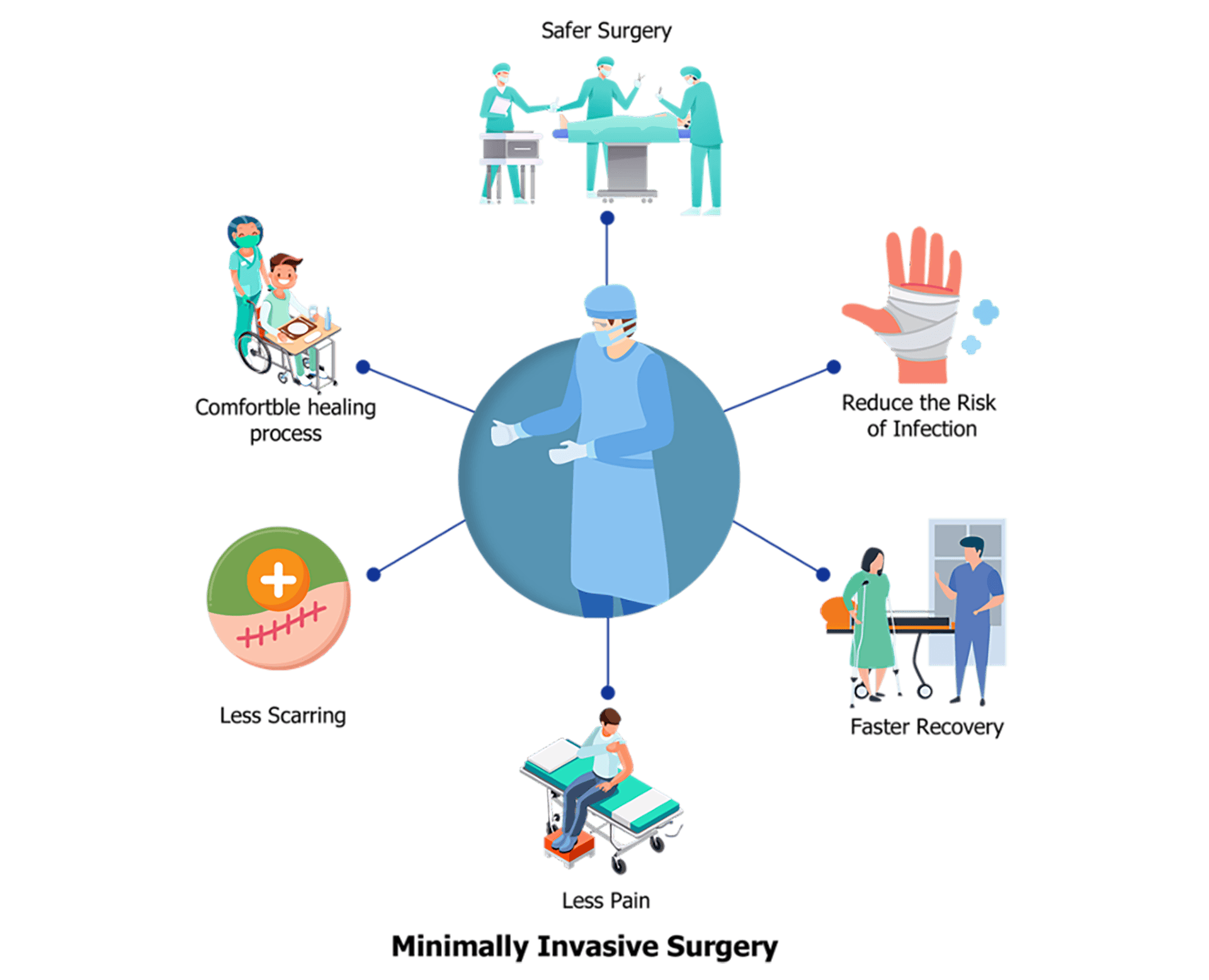
Benefits of Minimally Invasive Surgery
Compared to conventional open surgery, laparoscopic surgery offers you many benefits, including:
Lower Infection Risk and Pain
Reduced risk of infection, pain, and tissue damage due to smaller incisions.
Minimized Scar Tissue for Future Procedures
Less scar tissue which reduces the complexity of future procedures.
Lower Infection Risk and Pain
Reduced risk of infection, pain, and tissue damage due to smaller incisions.
Minimized Scar Tissue for Future Procedures
Less scar tissue which reduces the complexity of future procedures.
Reduced Bleeding
Less blood loss during procedures, leading to a lower need for transfusions and faster recovery.
Shorter Hospital Stays
Shorter duration of hospital stays.
Reduced Bleeding
Less blood loss during procedures, leading to a lower need for transfusions and faster recovery.
Shorter Hospital Stays
Shorter duration of hospital stays.
Specialties Involved in Minimally Invasive Surgery
Common Gynecology conditions to perform Minimally Invasive Surgery (MIS) – Laparoscopy :
- Etopic pregnancy
- Endometriosis
- Ovarian cysts
- Uterine fibroids
- Hysterectomy (uterus)
- Tubal ligation
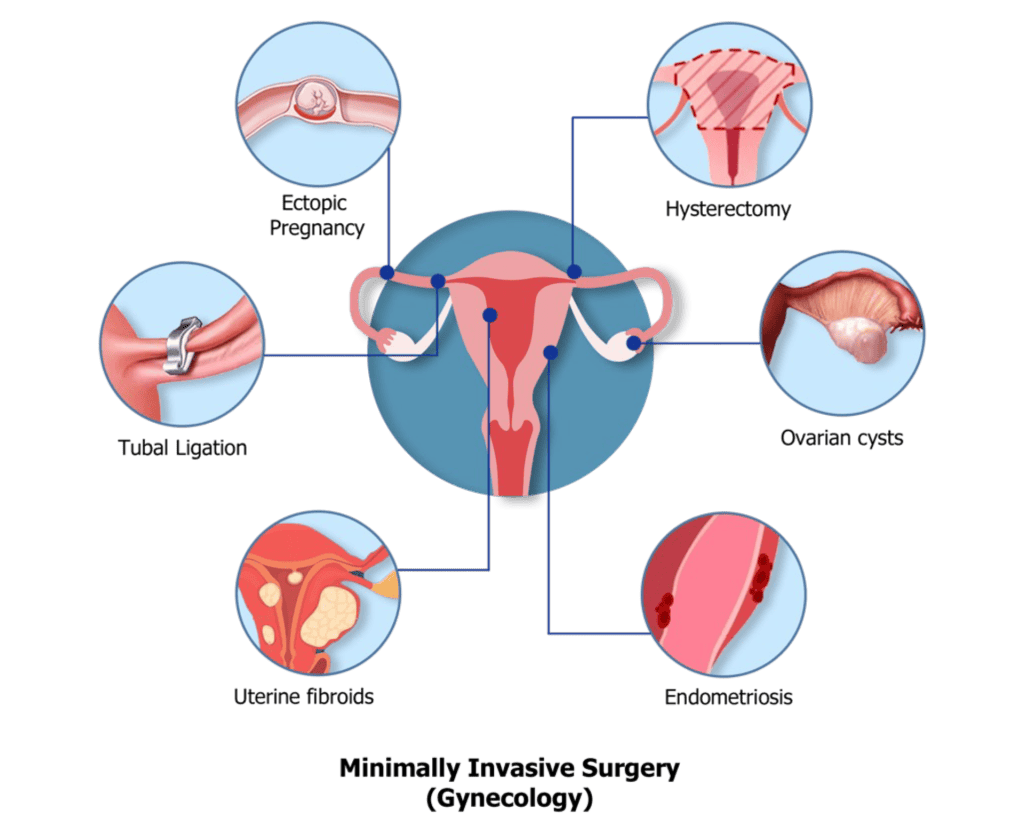
- Vaginal tightening treatment
- Stress urinary incontinence treatment
- Vaginal atrophy treatment
- Pelvic organ prolapse treatment
Common Gynecology conditions to perform Minimally Invasive Surgery (MIS) – Laparoscopy :
- Laparoscopic cholecystectomy (gallbladder)
- Laparoscopic appendicectomy (appendix)
- Laparoscopic adhesiolysis (abdominal adhesions)
- Laparoscopic bowel resection
- Laparoscopic hernia repair
- Laser treatment of Varicose Vein
- Endoscopic polypectomy – stomach and intestinal polyps
- Laser treatment of Hemorrhoids
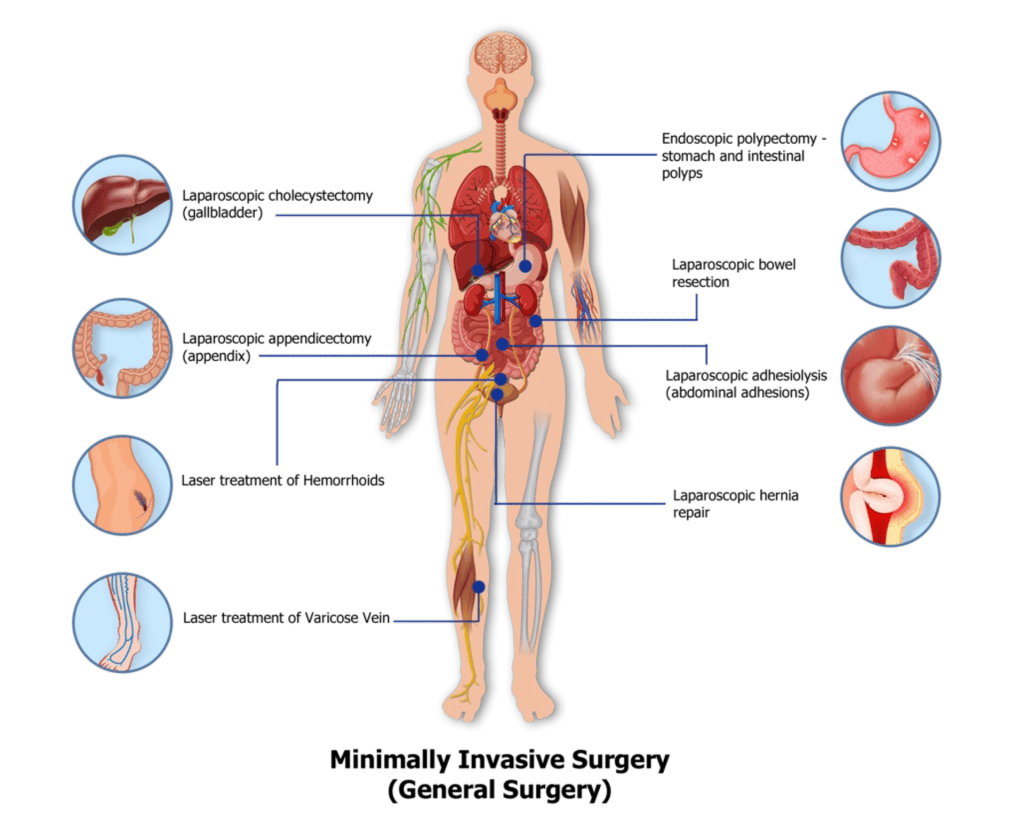
Meet Our Specialists
Dr. Rohana Bt Ahmad
GENERAL SURGERY BREAST AND ENDOCRINE SURGERY
Consultant General, Breast & Endocrine Surgeon
Common Gynecology conditions to perform Minimally Invasive Surgery (MIS) – Laparoscopy :
- Shoulder arthroscopy
- Hip arthroscopy
- Knee arthroscopy
- Ankle arthroscopy
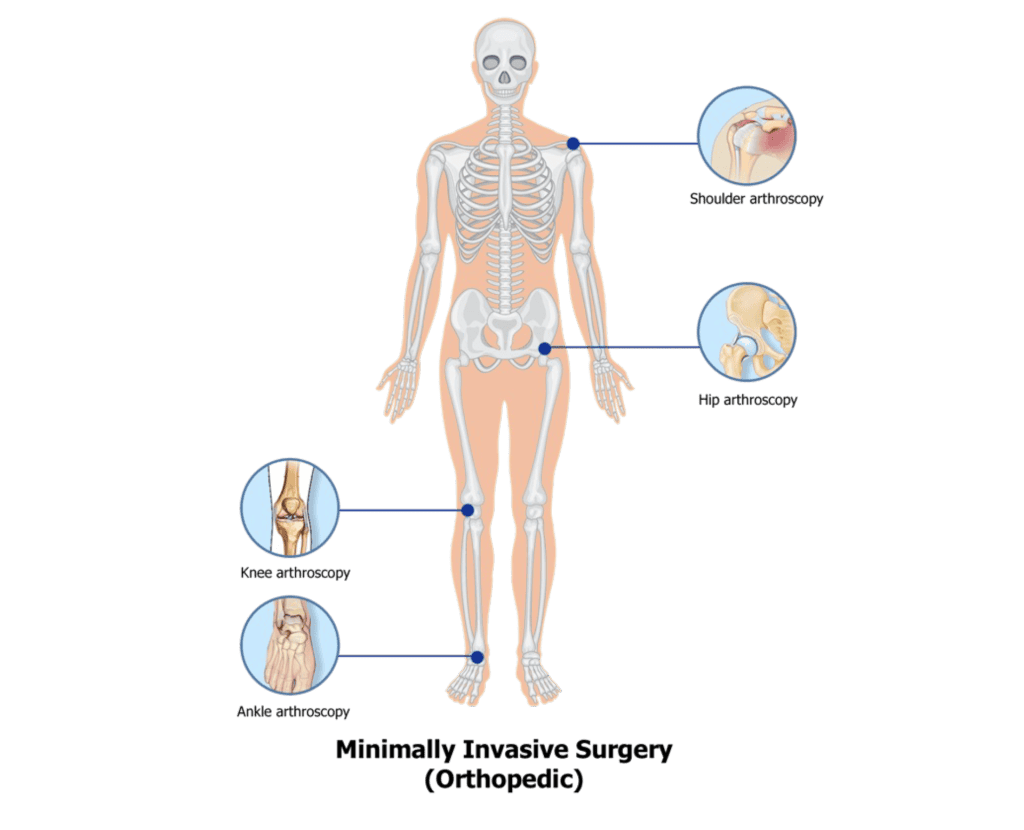
Common Gynecology conditions to perform Minimally Invasive Surgery (MIS) – Laparoscopy :
- Endoscopic third ventriculostomy
- Percutaneous laser discectomy
- Percutaneous endoscopic lumbar discectomy
- Endoscopic assisted biopsy
- Radiofrequency ablation
- Vertebroplasty
- Kyphoplasty
- Endoscopic assisted tumour excision
- Cervical disc arthroplasty
- Cervical radiofrequency ablation
- Facet joints injection
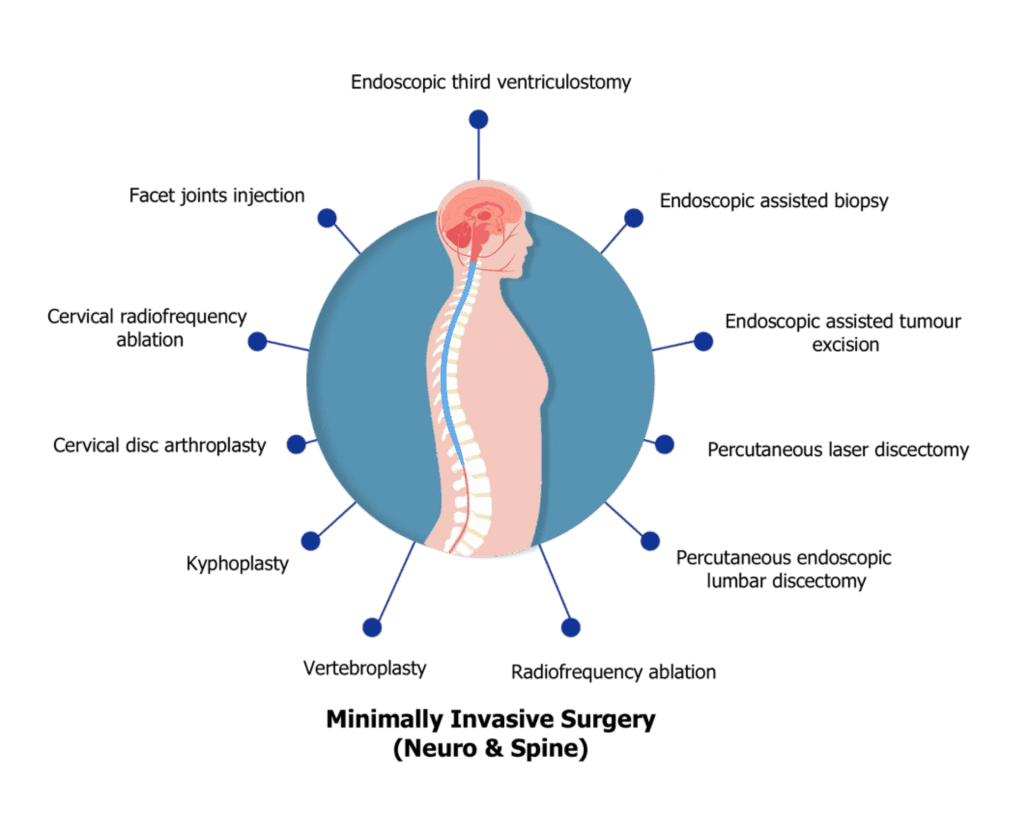
Common Gynecology conditions to perform Minimally Invasive Surgery (MIS) – Laparoscopy :
- Etopic pregnancy
- Endometriosis
- Ovarian cysts
- Uterine fibroids
- Hysterectomy (uterus)
- Tubal ligation

- Vaginal tightening treatment
- Stress urinary incontinence treatment
- Vaginal atrophy treatment
- Pelvic organ prolapse treatment
Common Gynecology conditions to perform Minimally Invasive Surgery (MIS) – Laparoscopy :
- Laparoscopic cholecystectomy (gallbladder)
- Laparoscopic appendicectomy (appendix)
- Laparoscopic adhesiolysis (abdominal adhesions)
- Laparoscopic bowel resection
- Laparoscopic hernia repair
- Laser treatment of Varicose Vein
- Endoscopic polypectomy – stomach and intestinal polyps
- Laser treatment of Hemorrhoids

Meet Our Specialists
Dr. Rohana Bt Ahmad
GENERAL SURGERY BREAST AND ENDOCRINE SURGERY
Consultant General, Breast & Endocrine Surgeon
Common Gynecology conditions to perform Minimally Invasive Surgery (MIS) – Laparoscopy :
Holmium Laser Enucleation of the Prostate (HoLEP)
HoLEP is a minimally invasive surgical treatment for men with any degree of prostate enlargement who have urinary symptoms, and men who are suffering from retention of urine, repeated urine infections or bleeding due to their enlarged prostate.
HoLEP hat uses pulses of laser beam to remove tissue from the inside of the prostate, which surrounds the urethra (the tube leading from the bladder to the urinary opening). HoLEP is minimally invasive and carries a low risk of complications compared to other surgeries that treat the same condition.
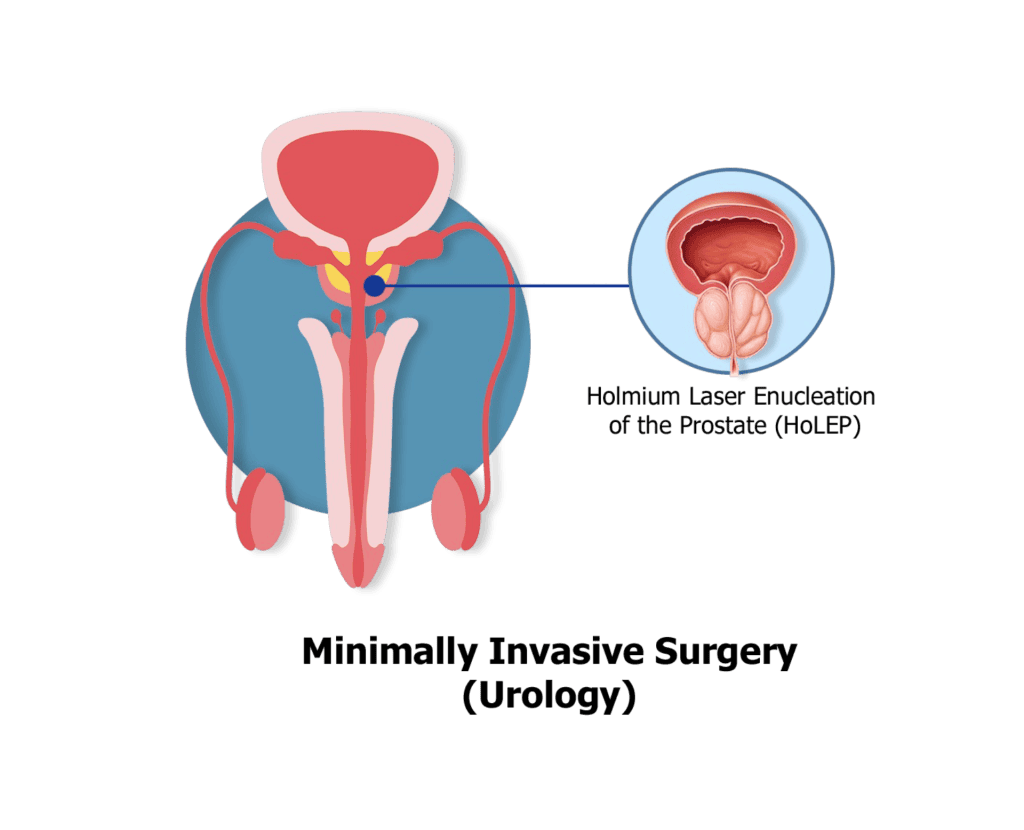
Meet Our Specialists
Common Gynecology conditions to perform Minimally Invasive Surgery (MIS) – Laparoscopy :
- Shoulder arthroscopy
- Hip arthroscopy
- Knee arthroscopy
- Ankle arthroscopy

Common Gynecology conditions to perform Minimally Invasive Surgery (MIS) – Laparoscopy :
- Endoscopic third ventriculostomy
- Percutaneous laser discectomy
- Percutaneous endoscopic lumbar discectomy
- Endoscopic assisted biopsy
- Radiofrequency ablation
- Vertebroplasty
- Kyphoplasty
- Endoscopic assisted tumour excision
- Cervical disc arthroplasty
- Cervical radiofrequency ablation
- Facet joints injection


